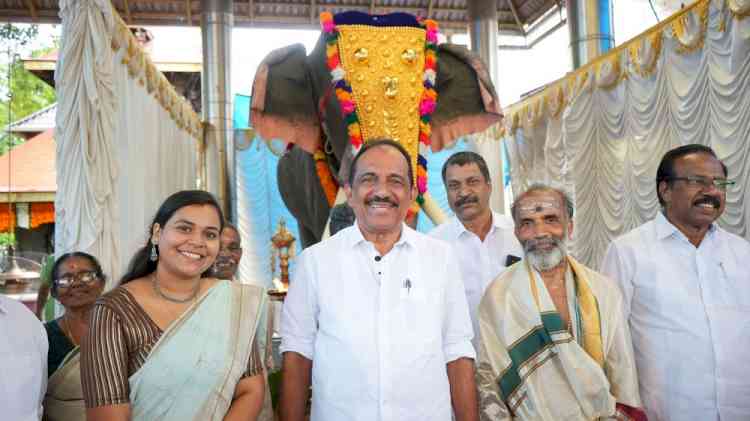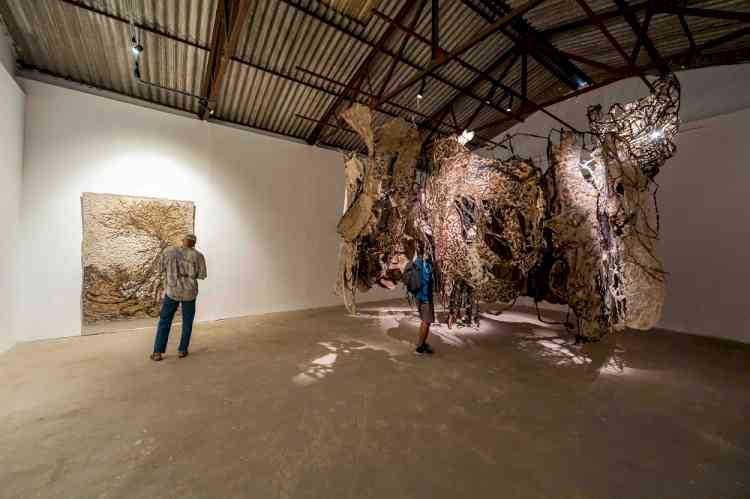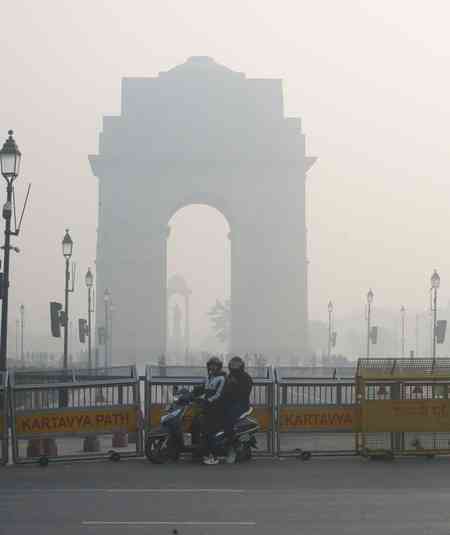Jackie Shroff and PETA India Gift Stunning Mechanical Elephant to Nediyathali Sri Siva Temple in Kodungallur, Kerala

Thrissur – Renowned actor Jackie Shroff and People for the Ethical Treatment of Animals (PETA) India have donated a life-size mechanical elephant, Thaleeswaran to Nediyathali Sri Siva Temple in Kodungallur near Thrissur, Kerala. Thaleeswaran will be used to conduct ceremonies at the temple in a safe and cruelty-free manner, helping real elephants stay with their families in the jungle. The initiative was facilitated by PETA India in recognition of the temple’s decision never to own or hire live elephants. This new mechanical elephant, Thaleeswaran, is a landmark eleventh robot donated to temples by PETA India and the seventh in Kerala. The mechanical elephant was welcomed through an inauguration ceremony, and the temple hosted a Panchari Melam performance
Jackie Shroff, one of Indian cinema’s most beloved actors with a career spanning over four decades and more than 200 films across languages, is equally admired for his deep compassion for animals and concern for the environment. Speaking about this initiative, he says, “My heart lights up when I see God’s creations living happily. Elephants are not meant to stand on hard floors, carry people on their backs, or walk in circles with chains around their legs. God intended for them to splash in rivers, roam in forests, and just be elephants. That’s exactly why I’m donating Thaleeswaran, a mechanical elephant, to a revered temple in Kerala.” Shroff adds, “Thaleeswaran can shake its head and ears, bless, and be part of every celebration without anyone getting hurt. This way, our traditions stay alive, and so do the elephants, free and joyful in the wild. That, to me, is real devotion.
After inaugurating the mechanical elephant, Member of Parliament Benny Behanan said, “I am pleased to inaugurate Thaleeswaran and especially glad to see how beautiful this mechanical elephant is. Though it looks like a real elephant, it is completely safe. The MP added, "Children can touch it, take photos, and enjoy its presence without any risk and this brings great joy to their hearts. It feels just like a real elephant, but with the added safety and compassion that makes it perfect for temple traditions.
The president of Nediyathali Sri Siva Temple, Suresh Babu, says, “We are truly delighted to welcome Thaleeswaran to our temple, not just as a symbol of tradition, but as a tribute to all sacred beings created by the divine, who, like us, deserve to live freely and safely with their families. With this compassionate step, we can honour Lord Ganesha without causing distress to any living being.” Babu added, “After witnessing several tragic incidents involving captive elephants attacking humans during festivals in Kerala, Thaleeswaran also helps ensure public safety. We encourage other temples to consider adopting mechanical elephants too, for the safety of devotees, the well-being of animals, and the continued grace of our cherished customs.
Elephants are intelligent, active, and gregarious wild animals. In captivity, they are trained to be used in processions through beatings, the use of weapons and force. Most elephants held captive in temples and other places suffer from excruciating foot problems and leg wounds due to chaining to concrete for hours on end. Most are denied adequate food, water, veterinary care, and any semblance of a natural life. Under these hellish conditions, many elephants become intensely frustrated and lash out, sometimes killing mahouts or other humans or animals. According to figures compiled by the Heritage Animal Task Force, captive elephants killed 526 people in Kerala in a 15-year period. Thechikkottukavu Ramachandran, who has been in captivity for about 40 years and is one of the most often used elephants in Kerala’s festival circuit, has reportedly killed 13 individuals – six mahouts, four women, and three elephants
In 2025, at least twenty captive elephants in Kerala had become upset and killed six people on different occasions, injuring several others, or damaged property. It is also pertinent to note that in 2024, at least fourteen incidents across India in which captive elephants harmed or killed their mahouts or others around them were reported. And recently, elephants ran amok during the Rath Yatra in Ahmedabad.
PETA India ignited the sympathetic movement to replace live elephants in temples at the beginning of 2023. Now, at least eighteen mechanical elephants are used in temples across South India. PETA India has donated ten to recognise the temples’ decisions to never own or hire live elephants. Recently, another mechanical elephant was donated to temples in Tamil Nadu by actor Trisha Krishnan and People for Cattle in India (PFCI). These mechanical elephants are now used to conduct ceremonies at their temples in a safe and cruelty-free manner, helping real elephants stay with their families in the jungle.
Mechanical elephants are 3-meter-tall and weigh 800 kilograms. They are made with rubber, fibre, metal, mesh, foam, and steel and run on five motors. A mechanical elephant looks, feels, and can be used like a real elephant. It can shake its head, move its ears and eyes, swish its tail, lift its trunk, and even spray water. They can be climbed upon, and a seat can be affixed on the back. They can be operated simply by plugging and playing with electricity. They can be taken through the streets and are mounted on a wheelbase, allowing them to be moved and pushed around for rituals and processions.
Until last year, Nediyathali Sri Siva Temple continued the tradition of hiring live elephants for their rituals. But this year marks a compassionate shift as the temple warmly embraces Thaleeswaran, a majestic mechanical elephant and the seventh to be donated by PETA India to a temple in Kerala.
Nediyathali Sri Siva Temple is a historically significant temple dedicated to Lord Shiva and houses one of the largest Shivlings in Kerala, facing west. It is one of four Thali temples built during the Perumakan dynasty. Notably, King Ramavarma Kulashekara sought refuge here during an attack on Kodungallur and formed a chaverpada (suicide squad) from within the temple.


 City Air News
City Air News 








